I make no claim as to the comprehensiveness or objectivity of this selection. Nevertheless, to the extent that it reflects personal priorities, I believe most artists, if not the entire art community, both local and international, acknowledge the existential criticality of the moment. In one way or another, each of these exhibitions has engaged this moment as it intersects with a specific place or places—fractured foundations extending no further than consciousness and destined to vanish. As always, beauty is privileged, the sublime revered.

Marsden Hartley, Adelard the Drowned, Master of the “Phantom”, c. 1938–39, oil on board, 28 × 22 in., The Frederick R. Weisman Art Museum at the University of Minnesota, Minneapolis, bequest of Hudson D. Walker from the Ione and Hudson D. Walker Collection.
Outliers and American Vanguard Art
LACMA
In an age of catastrophic displacements, LACMA’s (and the National Gallery’s) exhibition surveyed an intersectional expansion of consciousness between the culturally endorsed and what the conventional critical discourse can’t (or won’t) process.
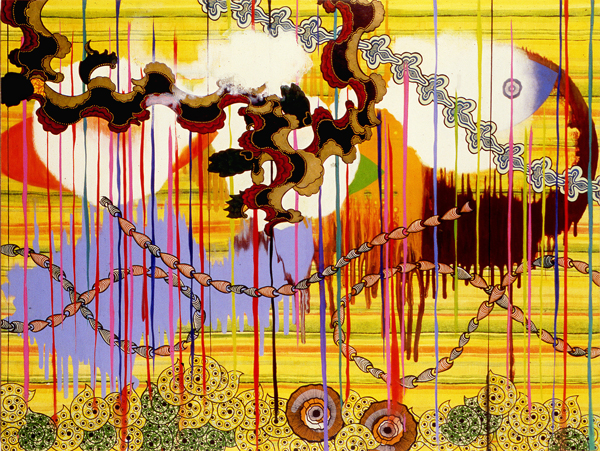
Merion Estes, Undercurrents (2003). Fabric collage, acrylic paint on printed fabric, 54 x 72 inches. Courtesy of the artist. Photo: Matt Kazmer.
Merion Estes: Unnatural Disasters
Craft & Folk Art Museum
This compact retrospective was an aurora borealis to throw light not merely on the Sixth Extinction, but the attenuated human consciousness that set it in motion—and Estes shows us beauty in the dying light.

Cauleen Smith, Remote Viewing (2009). Video still, 15:13 minutes. Courtesy of the artist, Corbett vs. Dempsey, Chicago, and Kate Werble Gallery, New York
A grammar built with rocks (Carmen Argote, Julien Creuzet, DAAR, Sandra de la Loza, Regina José Galindo, Adam Khalil, Zack Khalil and Jackson Polys, Zara Kuredjian, Uriel Orlow, Gala Porras-Kim, Susan Silton, Cauleen Smith)
Human Resources
A geo-cultural archaeology of the human trace, the stain of consciousness and identity, the violence and social politics of survival—a break-through intersection of art and natural history.
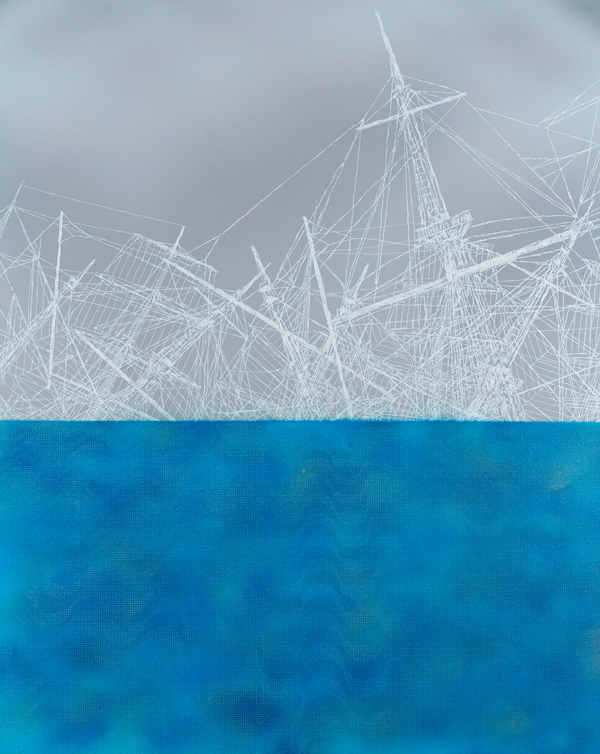
Christopher Russel, The Explorers #4 (2017). Pigment print scratched with a razor, aerosol paint, 44 x 35 inches. Unique. Courtesy of the artist and Von Lintel Gallery.
Christopher Russell: Explorers
Von Lintel Gallery
Russell’s work deconstructs romance to stoke fires both sacred and profane—an acid IV-drip seeping into consciousness subliminally to set our synapses on fire.
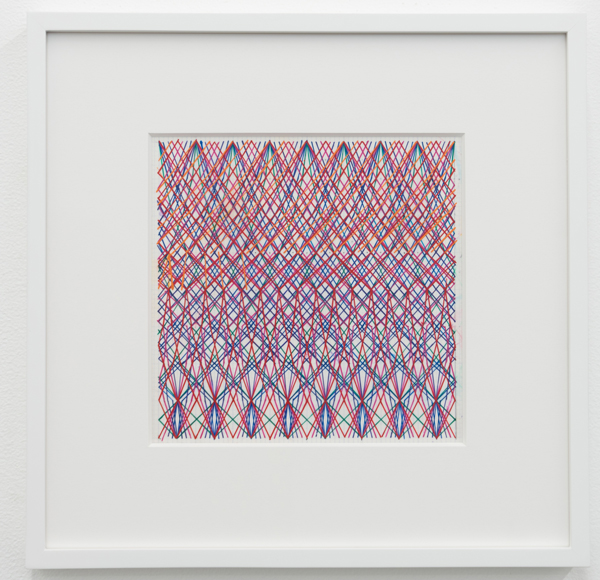
10. Channa Horwitz, Canon Untitled (c. 1983). Casein on graph mylar. Framed Dimensions: 15 x 15 inches (38 x 38 cm). Courtesy the artist and Ghebaly Gallery, Los Angeles. Photo: Kell Yang Sammataro.
Channa Horwitz: Structures
Ghebaly Gallery
Possibly the best exhibition of Horwitz’s groundbreaking work to date, the show put both the rigorous musicality and architectural scope of her work on display to sublime effect.
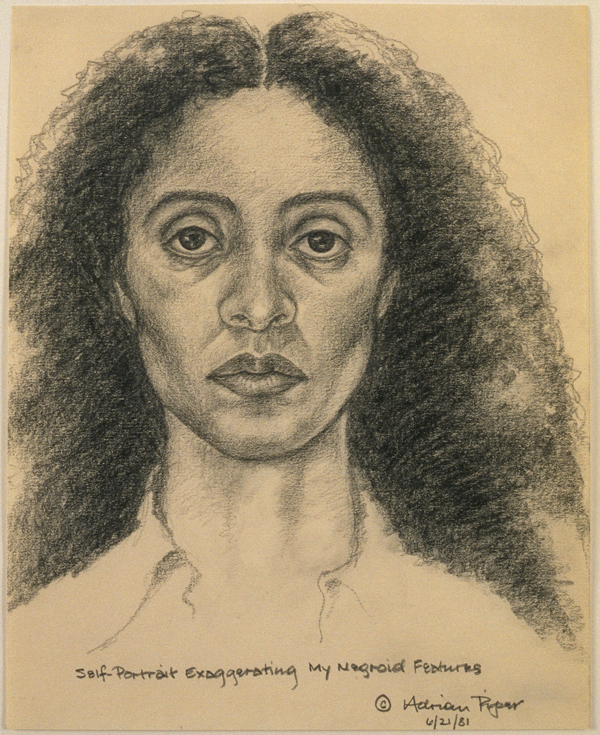
Adrian Piper, Self-Portrait Exaggerating My Negroid Features (1981). Pencil on paper. 10 × 8 inches. The Eileen Harris Norton Collection. © Adrian Piper Research Archive Foundation Berlin.
Adrian Piper: Concepts and Intuitions, 1965–2016
Hammer Museum
Underappreciated in the U.S., Piper’s work comes as an austere yet exuberant wake-up call: “Everything will be taken away”—she’s not kidding around.
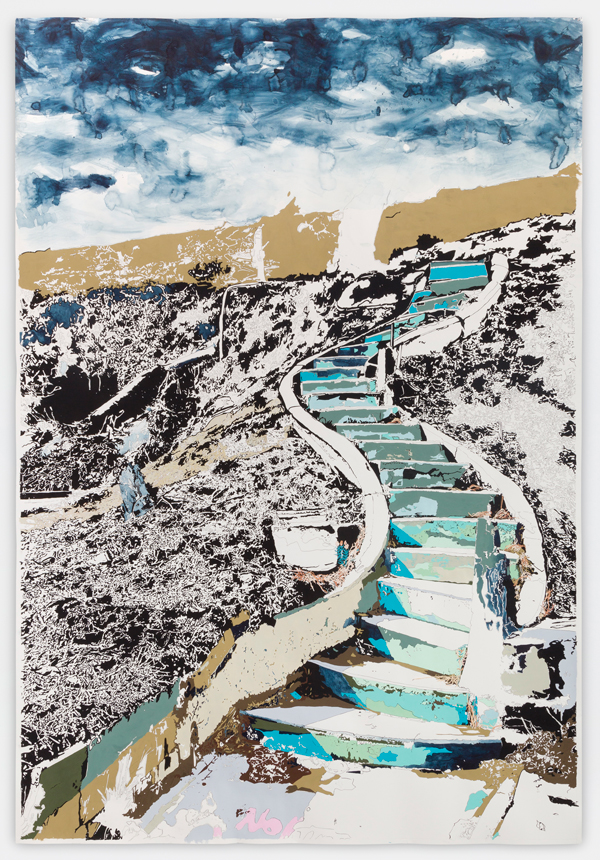
12. Francesca Gabbiani, The Unresolved Story (2016-2017). Ink, gouache and colored paper on paper, 105 x 72 inches. Courtesy of the artist and Gavlak Gallery.
Francesca Gabbiani: Vague Terrains/Urban Fuckups
Gavlak Gallery
Gabbiani’s dark mirror visions have gradually given way to the quotidian nightmare, and she is fearless and alive to it, reclaiming beauty from the ruins.
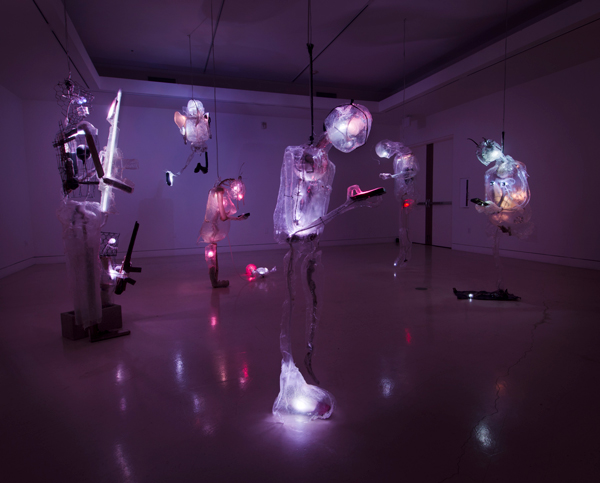
13. Danial Nord, Cloud Nine (2018), installation view. Photo credit: Gene Ogami.
Danial Nord: Cloud Nine
Torrance Art Museum
Nord’s installation effectively walked us through hell’s gates and into its ninth circle, i.e., the contemporary human condition, showing us how our hyper-connected, mediated society manages to function in nature, yet simultaneously against nature.

Jess: Secret Compartments
Kohn Gallery
A cross-section of the most formative periods of Jess’s work, this museum-scale exhibition gave full-throated voice to the disparate beauties from the enigmatic to Arcadian Jess prized from the crevices of his imagination and the world beyond.
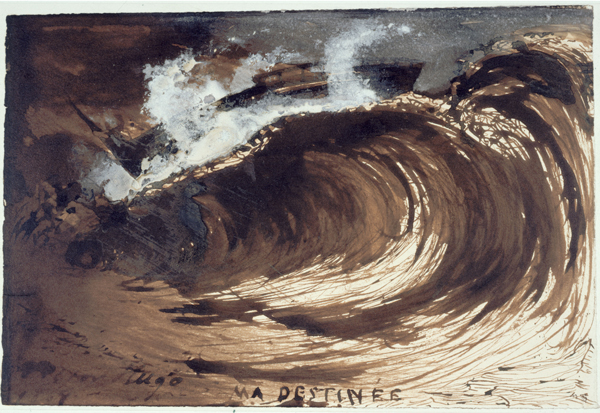
Victor Hugo, Ma destinée (My destiny), 1867. Brown ink and wash and white gouache on paper. 6 3/4 × 10 3/8 in. (17.2 × 26.4 cm). Maisons de Victor Hugo, Paris / Guernesey, MVHP.D.927 © Maisons de Victor Hugo, Paris / Guernesey / Roger-Viollet.
Stones to Stains: The Drawings of Victor Hugo
Hammer Museum
Hugo, acknowledged literary master, is revealed in this exhibition as visual artist of jaw-dropping visionary power, anticipating 20th century developments as diverse as abstract expressionism, art brut, and Raymond Pettibon.
Honorable Mentions
Nicole Eisenman: Dark Light, Susanne Vielmetter Los Angeles Projects
Roland Reiss: Unrepentant Flowers and New Miniature Tableaux, Diane Rosenstein Gallery
Julie Curtiss: Altered States, Various Small Fires
Bamboo, Craft & Folk Art Museum
William Lamson: Badwater, Make Room

